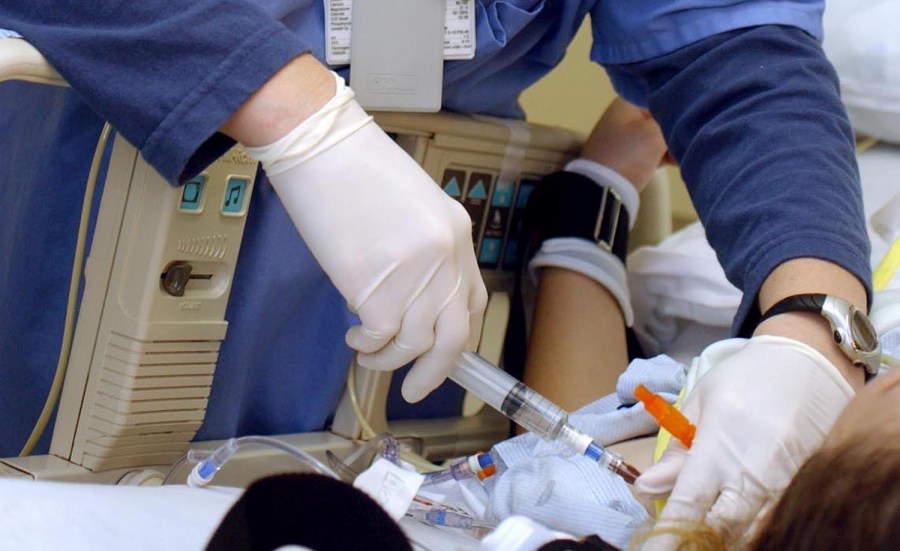
A multi-phased approach has helped VUMC reduce central line-associated bloodstream infections. (file photo)
State report shows Vanderbilt achieving low rates of central line-associated infections
Intensive care units at Vanderbilt University Hospital and the Monroe Carell Jr. Children's Hospital at Vanderbilt are achieving exceptionally low rates of central line-associated blood stream infection (CLABSI), according to a report released this week by the Tennessee Department of Health.
Central lines are flexible tubes placed in a large vein in the neck, chest or groin for an extended period to allow repeated administration of medication or fluids or repeated blood testing.
In 2008, Tennessee began requiring hospitals to report CLABSI cases. This highly dangerous hospital-acquired infection is a frequent cause of increased mortality and prolonged patient stays.
In this latest reporting period, covering January through June of 2011, of the state’s 90 hospitals, VUH and Children’s Hospital were among six that were noted for having CLABSI rates significantly lower than the national average. During those six months there were 11 cases of CLABSI in VUH ICUs and three cases in Children’s Hospital ICUs (excluding burn, trauma and neonatal intensive care, which are reported separately).
Adjusted for patient severity, the report shows that VUH observed only five cases for every 10 expected cases, and Children’s Hospital observed only three cases for every 10 expected.
“It’s really rewarding to see these numbers. This report is a tribute to the extensive efforts of front-line providers and leaders to reduce these infections,” said Chief Hospital Epidemiologist Tom Talbot, M.D., MPH. “What we thought was impossible three or four years ago is clearly possible.”
Talbot recalls the first milestone in the CLABSI reduction effort, when, in late 2009, the Neonatal ICU achieved a streak of 100 CLABSI-free days. Since then every patient care unit at VUMC has achieved at least one such streak.
“These results are evidence of what Vanderbilt can accomplish with ambitious and clear aims, aligned action and commitment to the patients and families whom we serve,” said Julie Morath, R.N., M.S., chief quality and safety officer. “Tremendous work has gone into reducing these infections and we feel really good about this progress, but our work is never done in this area.”
Also of note in the report:
• In the Neonatal ICU, the state report shows 12 expected cases and zero observed cases.
• This is the second consecutive year that Children’s Hospital has been noted for having CLABSI rates significantly lower than the national average.
• This latest reporting period happened to fall within the Surgical ICU’s recent record-breaking streak of 435 CLABSI-free days. In the report, the SICU is the standout unit at VUH, having 2,802 central-line days and zero cases of CLABSI.
Tennessee hospitals as a whole made significant reductions in CLABSI in 2010 and have maintained those reductions in the first two quarters of 2011. Hospitals within the state report CLABSI through the National Healthcare Safety Network, a program of the Centers for Disease Control and Prevention (CDC).
The CDC recently acknowledged Tennessee as among the few states that validate CLABSI reporting (the Department of Health visits hospitals to audit reporting).













